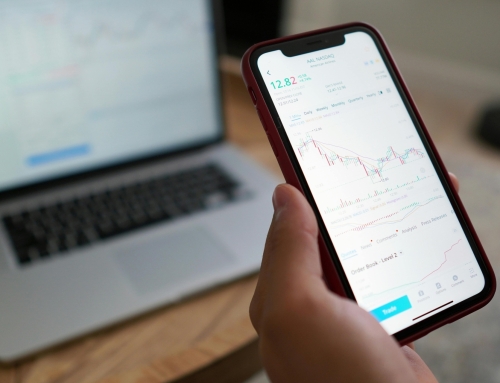How IPO Village is using crowdfunding to benefit investors and small companies
Initial Public Offerings (IPOs) are an essential part of the public market and the economy. After all, they introduce companies to additional funding that they need in order to grow their businesses. Over the past 15 years, a downward trend in IPOs has emerged. In 1996, there were 768 U.S. issuers compared to just 83 in 2011. The average gross proceeds from each offering averaged $147.8 million in 2011 versus $30 million in 1996. This shows the IPO trending toward fewer and larger companies. (Statistics from WilmerHale’s 2012 IPO Report.)
Realizing the value of small companies and individual investors, IPO Village is attempting to help these small companies reach individual investors through an online platform. Interested investors simply create a free account at ipovillage.com. They are then entered into a first come, first serve queue. When a new IPO becomes available on the site, those registered have the opportunity to look over the company and choose whether or not to invest in it.
On September 27, I had the opportunity to interview Daniel Hirsch, the managing partner at First Line Capital—IPO Village’s parent company.
Rice: The IPO market appears to be against smaller companies lately. Where do you see the IPO market and IPO Village’s role in it?
Hirsch: Going public for a company is not something that’s going away any time soon. It’s a valuable commodity for serious companies. Along with the IPO comes liquidation, an exit strategy for investors. An investor in an IPO can turn around and sell his or her shares tomorrow, or in 20 years. Liquidity is a very big plus for investors, and it is a very big plus for companies to be able to offer it to investors.
[wp-like-locker]
R: Underwriters typically charge a 7-10% cost to companies going public. Are smaller companies not going public because of these expenses?
H: There are expenses that go with going public, but we [First Line Capital] have dealt with companies who have said, “We’re going to take that risk.” The problem is that when you’re dealing with underwriters, the company goes to the public market, and the underwriter sells its shares to institutional investors, who take their profits and the stock drops. It continues to drop, sometimes to pennies a share, and the company is then faced with a serious charge to fix their stock price.
According to WilmerHale, the average IPO dropped 11% in 2011. Less than half of 2011’s IPOs traded at or above their IPO price by the year’s end.
R: How does IPO Village help this?
H: Companies are able to now reach out to investors who are not accredited through the JOBS Act. That’s the key here. Before that, you were not allowed to solicit investment if you were a small company that was not registered with the Securities & Exchange Commission (SEC). In our case, we turn to companies that are registered with the SEC and the Financial Industry Regulatory Authority (FINRA). We provide them with a platform where they can reach out to investors with their business plan. The return on the IPO is then 100% because there is no charge to the company.
R: How would you define crowdfunding?
H: Crowdfunding allows investors to buy shares of small companies that are not on the public stock market. We, at IPO Village, think that a company’s registration with the SEC is important. The reason is that all of the woodwork is put in place. The company has auditors, etc. So, while normal crowdfunding deals with companies with a business plan, we deal with companies that have gone out and have the business plan, have the disclosure and know what their challenges are, know what their accomplishments are, and know their company structure.
R: What are crowdfunding’s benefits for investors?
H: First, you get access to an IPO level company at a decent price. Second, investors are protected from large profit taking. With crowdfunding, there is a significant number of investors who aren’t holding a large number of shares. This spreads out the base and eliminates big profit taking sell-offs occurring at one time. Third, investors are protected from shorts. Institutions hype the stock, and shorters know that the stock is being hyped. They also know that the stock will go down because of the IPO and profit sharing, so they bet on its going low. This drives the price lower, artificially low. In short, the stock is more secure via crowfunding.
R: Besides SEC and FINRA registration, what do you look for in the companies that IPO Village features?
H: Because we are starting off, we want to focus on companies that have a broad appeal. At some point, we hope this will grow to where any company will do. But, at first, there is an educational process that has to happen. And investors will get it. When they look at a company on our site, they will see prospectuses and they’ll see contracts that these companies have with other companies. Beyond a business plan, they are going to get a lot of real information.
IPO Village does not receive compensation to host companies. Any company that has completed a verifiable S-1 registration with the SEC and meets various other basic due diligence will be permitted to host their public offering on IPO Village.
R: How do you see IPO Village affecting the market as a whole? Will it lessen the effect of institutional investors?
H: I hope the answer is yes. I think that it will definitely ease out some of the institutional investors, and the market will become less reliant on institutional investing. That’s good for shareholders; it takes a large amount of shares out of a small number of hands. It makes for a healthier share price, and healthier options.
R: What does IPO Village say for microcap stocks?
H: IPO Village is saying, “Hey there is nothing wrong with being a microcap stock.” People make fun of it saying, “It’s a penny stock or a pink sheet.” But, IPO Village is saying, “Let’s not forget companies that are microcaps.” They have good ideas too and some of them do extremely well. Some of them don’t, but some of them do. Getting these microcaps at pre-IPO prices is a wonderful opportunity for the companies to help themselves along with any investors.
R: Is there anything else that you would like to add?
H: I think that The Bowser Report is aimed at the investors that we’re looking for and the companies that we’re dealing with. For people who understand that microcap companies are a worthy investment to take a look at, IPO Village is something that they should be waiting for because it’s really out to serve microcap companies and their investors.
Investing in IPOs, like all investments carries an inherent risk. These companies are not yet public and, although IPO Village only selects companies that are SEC and FINRA registered, there is no assurance of profitable gains. As always, due diligence is a must before investing. This piece is intended for informational purposes only.
[/wp-like-locker]
For further information on IPO Village, visit www.IPOVillage.com.







Leave A Comment